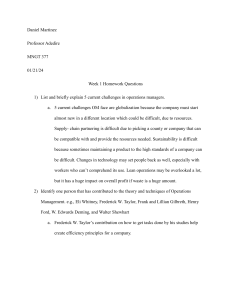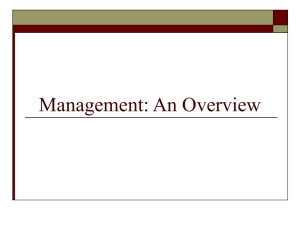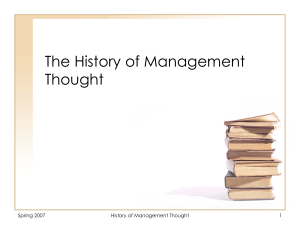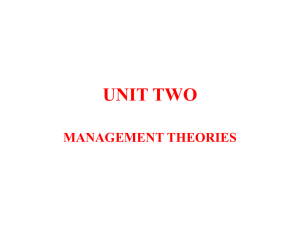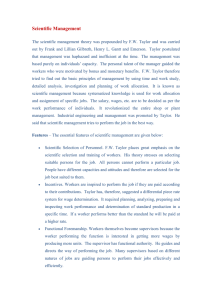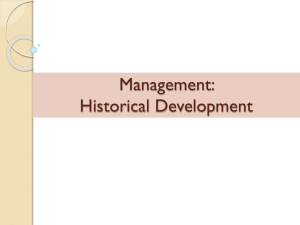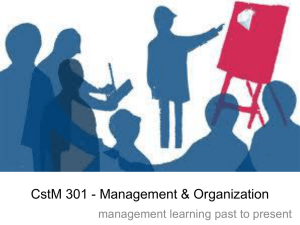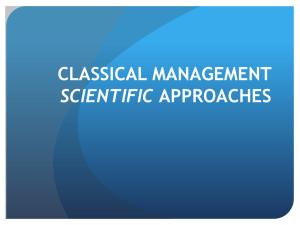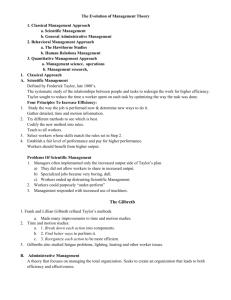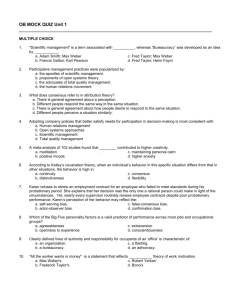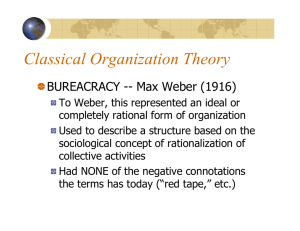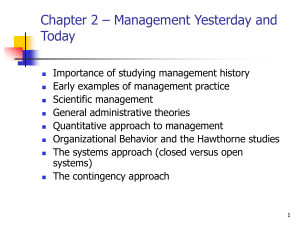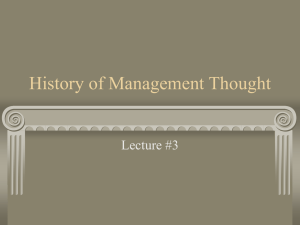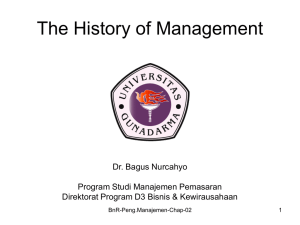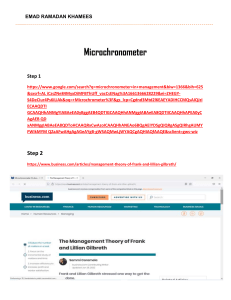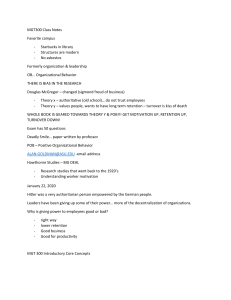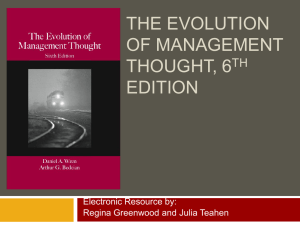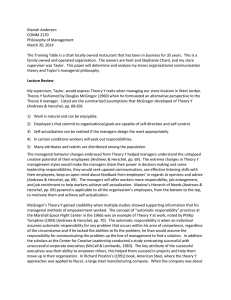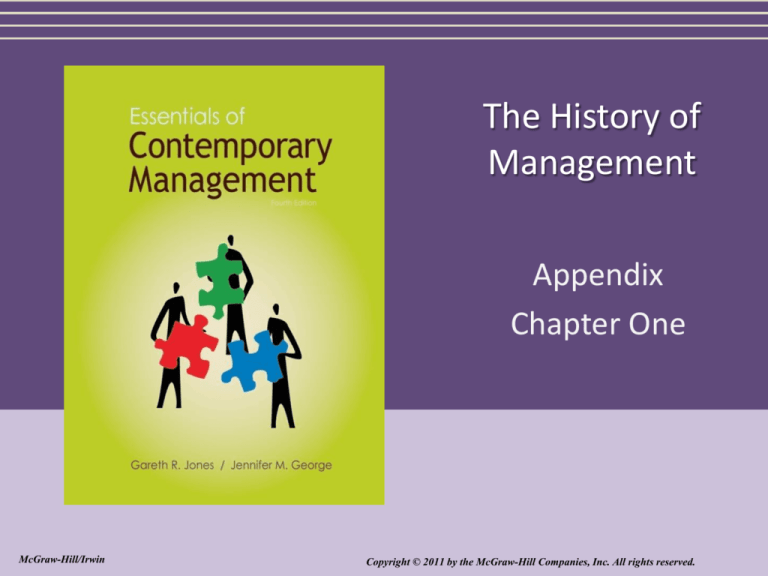
The History of
Management
Appendix
Chapter One
McGraw-Hill/Irwin
Copyright © 2011 by the McGraw-Hill Companies, Inc. All rights reserved.
F.W. TAYLOR and SCIENTIFIC
MANAGEMENT
• Scientific Management -- Studying workers to
determine the most efficient ways of doing things
and then teaching those techniques.
• Three Key Elements to Increase Productivity
1. Time
2. Methods of Work
3. Rules of Work
1-2
F.W. TAYLOR and SCIENTIFIC
MANAGEMENT
1. Study how a job is performed.
• Gather time & motion information.
• Check different methods.
2. Codify the best method into rules.
3. Choose workers whose skill matches the rules.
4. Establish a fair level of performance and pay.
1-3
WEBER’S BUREACRATIC THEORY
1. In a bureaucracy, a manager’s formal authority
derives from the position he or she holds in the
organization.
2. In a bureaucracy, people should occupy
positions because of their performance, not
because of their social standing or personal
contacts.
3. Each position’s formal authority and task
responsibilities should be clearly defined.
1-4
WEBER’S BUREACRATIC THEORY
4. Authority can be exercised efficiently when
positions are arranged in a clear organizational
hierarchy, so employees know who to report to
and who reports to them.
5. Managers must create a well defined system of
rules and standard operating procedures, so
that they can effectively control behavior within
an organization
1-5
TIME-MOTION STUDIES
Frank & Lillian Gilbreth
• Time-Motion Studies -- Studies of which
tasks must be performed to complete a job
and the time needed to do each task.
• Led to the development of the Principle of
Motion Economy -- Every job can be broken
down into a series of elementary motions;
developed by Frank and Lillian Gilbreth.
1-6
MARY PARKER FOLLETT
• “Authority should go with knowledge…
whether it is up the line or down.”
• Humanized Taylor’s work
• Advocated Self-Managed Teams
• Anticipated Empowerment
HAWTHORNE STUDIES:
PURPOSE AND RESULTS
• Researchers studied worker efficiency
under different levels of light.
• Productivity increased regardless
of light condition.
• Researchers decided it was a
human or psychological factor
• Hawthorne Effect- People act
differently when they know they are
being studied.
THEORY X AND THEORY Y
• Douglas McGregor proposed managers
had two different sets of assumptions
concerning workers.
• Their attitudes about motivating
workers was tied to these assumptions.
• McGregor called them Theory X and
Theory Y.
ASSUMPTIONS of
THEORY X MANAGERS
• Workers dislike work and seek to avoid it.
• Workers must be forced or threatened with
punishment to get them to perform.
• Workers prefer to be directed and avoid
responsibility
• Only effective motivators are fear and money.
ASSUMPTIONS of
THEORY Y MANAGERS
• People like work, it’s a part of life.
• Workers seek goals they are committed to.
• Commitment to goals depends on perceived
rewards.
• People can use creativity to solve problems.
• Intellectual capacity is only partially realized.
• People are motivated by a variety of rewards.
THEORY Z
• William Ouchi researched cultural differences
between the U.S. (Type A) & Japan (Type J)
• Type J is committed to the organization and
the group, while Type A is focused on the
individual
• Theory Z is the hybrid approach of both types

